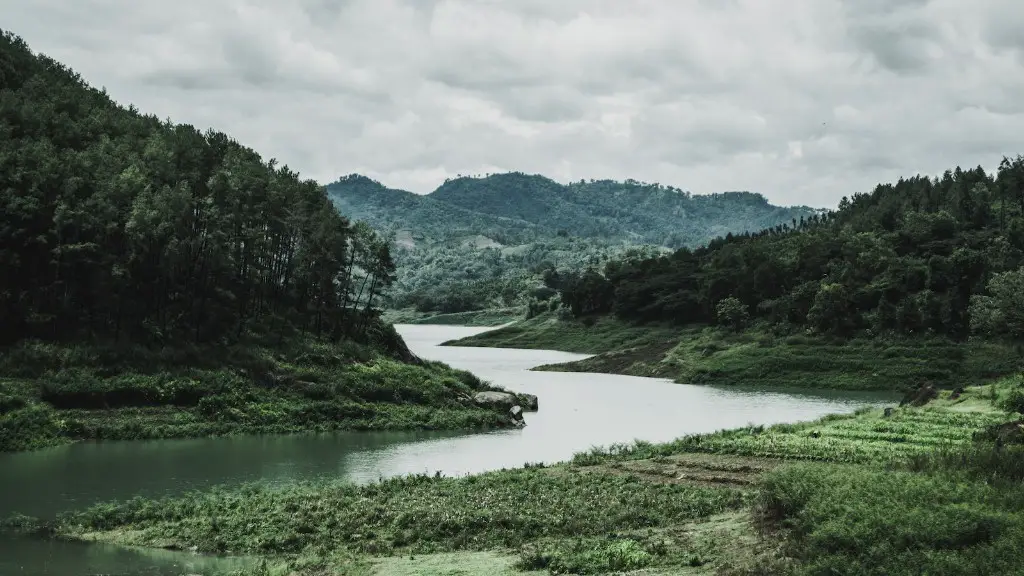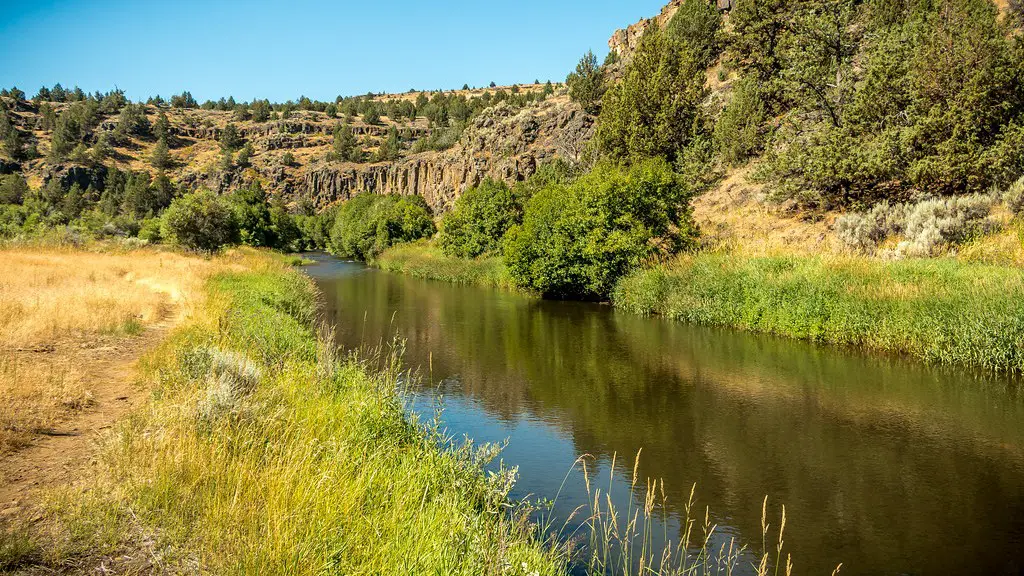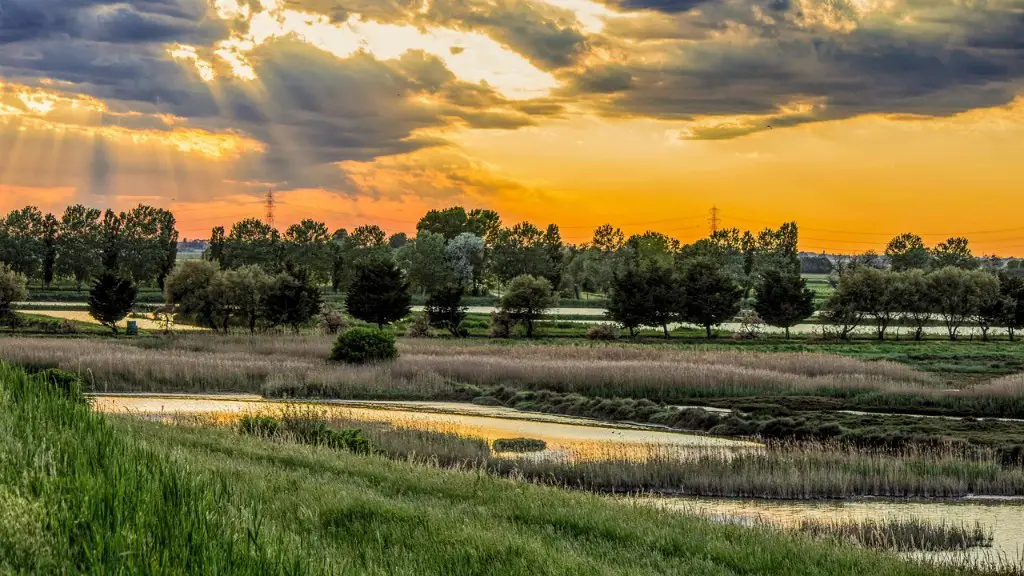The Yellow River, also known as the Huang He, is the second-longest river in Asia. originating in the Bayan Har Mountains in Qinghai Province in western China, it flows through nine provinces before emptying into the Bohai Sea. The Yellow River is an important source of water for irrigation and transportation in China. It is also considered the cradle of Chinese civilization, as some of the earliest human civilizations began along its banks.
The Yellow River is one of the most important rivers in China because it is the second-longest river in the country and it flows through some of the most populous regions of the country, including the North China Plain. The river is also an important source of water for irrigation and for hydroelectric power.
What is the legend about the Yellow River?
The history of China is said to have began with heavy flooding along the Yellow River. A man named Gun is said to have helped control the floods by building dikes, but it wasn’t until his son Yu took over the project and taught the locals to dredge the river and channel the water that the problem was finally fixed.
The Shang Dynasty was the first historic dynasty of China. The river valley of the Yellow River provided a fertile area for this civilisation to develop. The area was forested and the Shang used wood to build their homes and public buildings; little has survived of their domestic architecture.
What are three facts about the Yellow River
The Yellow River is one of the longest rivers in the world, and is considered the cradle of Chinese civilization. The river gets its name from the yellow-colored silt that is carried downstream by the river. The silt is a result of the erosion of the loess plateau in central China. The Yellow River is also the muddiest major river on earth, with an annual sediment load of 1.6 billion tons.
The Yellow River has caused countless deaths and destruction over the centuries due to its frequent flooding. In 1887, a flood killed over 900,000 people. In 1931, another flood killed an estimated 3.7 million people. The river is nicknamed “China’s Sorrow” due to the devastation it has caused.
The worst flood in human history occurred in 1887, when the Yellow River overran the dikes in Henan Province. That flood covered 50,000 square miles. It inundated eleven large towns and hundreds of villages. Nine hundred thousand people died, and two million were left homeless.
How did the Yellow River help Ancient China?
The two most important geographical features of Ancient China were the two major rivers that flowed through central China: the Yellow River to the north and the Yangtze River to the south. These major rivers were a great source of fresh water, food, fertile soil, and transportation. The Yellow River was especially important because it was the birthplace of Chinese civilization.
The Yellow River, one of the most important rivers in China, has been nicknamed the “River of Disaster” and “China’s sorrow” due to the devastating floods it has caused throughout its history. The river has been an important part of Chinese civilization for thousands of years, and its floods have often caused great destruction and loss of life. In recent years, the Chinese government has taken great efforts to control the river and protect against floods, but the river still remains a great threat to the country.
How did the Yellow River affect medieval China?
The Yellow River in Ancient China was responsible for unifying the people behind strong leaders. The river was also able to produce bountiful harvests since the floods no longer destroyed the crops as often. The Xia Kingdom was able to rule central China for several centuries because of this.
The river water is a direct source of drinking water for many of the people living along the river, and the bodies are a serious form of pollution. Even the Lanzhou City Water Station puts unidentified corpses back into the river. The local civil service departments bury around 60 unidentified bodies a year.
Why does the Yellow River have so many bodies
The Yellow River is infamous for the high number of suicide victims that are found in its waters. In fact, 85% of all bodies found in the river are believed to be suicide victims. The remaining 10% are accidental deaths, and 5% are murder victims who were likely dumped in the river. There is no reliable way to determine how many bodies are currently flowing in the river at any given time.
The Yellow River is the second largest river in China and is an important water source for the country. However, the river’s lower course is drying up every year, which is having a significant impact on industrial and agricultural production, as well as the livelihood of the people living alongside the river.
How was the Yellow River used as a weapon?
The breach of the dyke was an attempt at strategic interdiction, to limit the mobility of the Japanese army and stop it moving further west. The waters of the River were to do what soldiers had not been able to do: to halt the Japanese advance. The breaching was a strategic move born of desperation.
The 1887 flood of the Huang-Ho (Yellow River) was one of the most severe floods in Chinese history. Heavy rainfall unleashed an enormous flood wave, which swelled further as dams burst, inundating more than 15,000 square kilometers. This devastating flood resulted in the loss of life and property, and displaced many people.
What was one of the major impacts of the Yellow River flooding
The floods in China have been some of the worst in recent memory. They have covered and destroyed thousands of square kilometers of farmland, and shifted the course of the Yellow River hundreds of kilometers to the south. Thousands of villages were inundated, and several million villagers were forced from their homes and made refugees. The death toll is still unknown, but it is sure to be in the thousands. The Chinese government is struggling to provide aid and relief to the affected areas, and it will be years before the full extent of the damage is known.
The Yangtze River is the most important river in China for a variety of reasons. It is the country’s principal waterway, and its basin is home to nearly one-third of the national population. Additionally, the Yangtze River basin is China’s great granary, making it an essential part of the country’s food security. The Yangtze River is therefore of immense importance to China, and its importance is only likely to grow in the years to come.
What are China’s two most important rivers?
The Yellow River and Yangtze River are two of the most important rivers in China. They both originate in the Tibetan Plateau and flow through China Proper. The Yellow River is located in the north of the country, while the Yangtze River is located in the south. These two rivers are hugely important for the economy and way of life in China.
The Yellow River is one of the two major rivers in China. It is called the Sorrow of China because it changed its course and caused frequent floods. The river is a major source of water for agricultural and industrial uses. It also provides transportation for goods and people.
Conclusion
The Yellow River is one of the most important rivers in China for a number of reasons. Firstly, it is the second longest river in the country, after the Yangtze River. Secondly, it has a long history – it is believed to be the birthplace of Chinese civilisation, and has been important in Chinese culture and mythology for thousands of years. Thirdly, it is an important source of water for agriculture in northern China. Finally, it is one of the most scenic rivers in the country, with its winding course and beautiful yellow waters.
The yellow river is so important because it is the longest river in China. It is also the third largest river in the world. The yellow river is a symbol of China’s history and culture.





